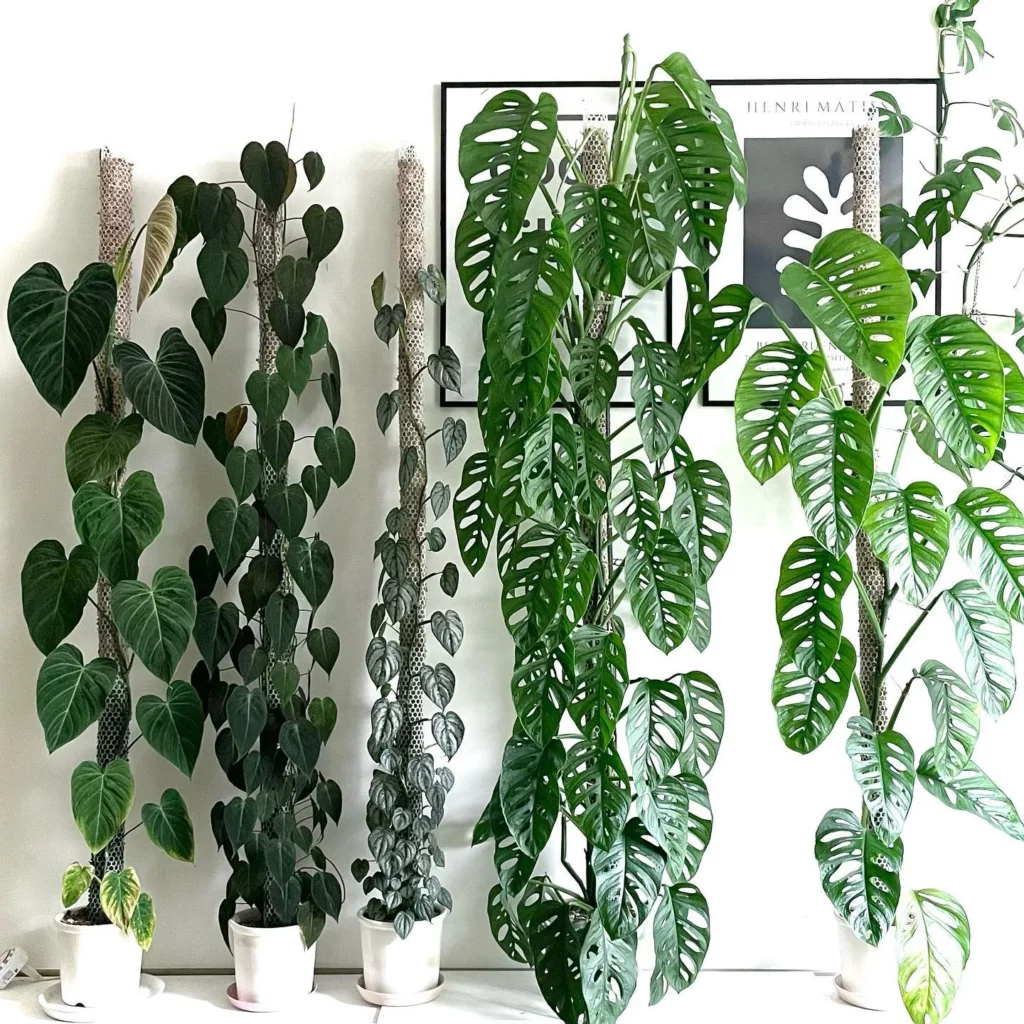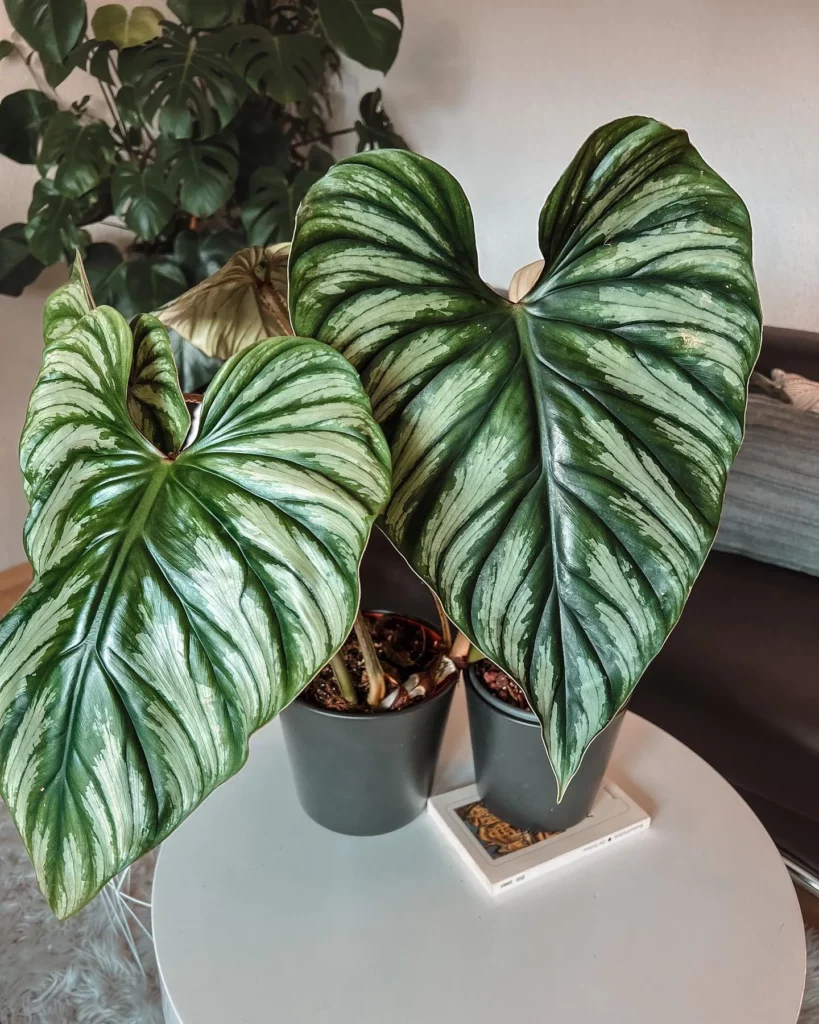To make a philodendron fuller, provide proper lighting, regular watering, appropriate fertilization, and occasional pruning to encourage healthy growth.
Philodendrons are one of the most popular indoor plants for a reason. With their lush, green foliage and easy-to-care-for nature, they’re the perfect addition to any home or office space. But there’s just one problem: they can sometimes be a bit finicky when it comes to growth patterns.
If you’re tired of your philodendron looking sparse and lackluster, fear not! In this article, I’m going to share my expert tips for making your philodendron plant fuller than ever before.
Brief Overview Of Philodendron Plants



Before we dive into the nitty-gritty of philodendron care, let’s take a moment to appreciate just how incredible these plants are. Philodendrons are part of the Araceae family and come in a variety of shapes and sizes – from small bushy plants to long trailing vines that can grow several feet in length.
One thing that all philodendrons have in common is their ability to purify the air around them. These plants have been shown in studies to remove harmful toxins like formaldehyde and benzene from indoor spaces, making them an excellent choice for anyone looking to improve their air quality.
No products found.
Explanation Of The Problem: How To Make Philodendron Fuller

Now let’s get down to business – what exactly is the problem we’re trying to solve here? Put simply, many philodendron owners struggle with getting their plants to look as full and lush as they want them to.
Instead of thick foliage that flows over the edges of pots or trellises, they end up with spindly vines that look more like sad little twigs than anything else. So why does this happen?
There are several factors at play here – from lighting conditions to watering schedules – but at its core, the issue comes down to one thing: encouraging your philodendron to grow more leaves and stems. With the right care and attention, however, it’s entirely possible to transform your scrawny plant into a verdant jungle of greenery that will make all your friends jealous.
Understanding Philodendrons



Philodendrons are not just any ordinary houseplant. They come in a variety of types, each with their unique characteristics and growth habits. Understanding these plants’ critical traits is crucial to ensure that they thrive in your home or office space.
Types Of Philodendrons And Their Characteristics
One of the most impressive things about philodendrons is the sheer variety of species available to plant enthusiasts. Some commonly available types include the Heartleaf Philodendron, the Monstera Deliciosa, and the Selloum Philodendron.
The Heartleaf Philodendron is an excellent plant for beginners as it is hardy and easy to care for. This type of philodendron features heart-shaped leaves that grow on long vines, making them perfect as hanging plants.
The Monstera Deliciosa features large green leaves with distinctive perforations, giving it a unique look that adds depth to any room. It requires more attention than other philodendron species but rewards its caregivers with stunning foliage.
No products found.
The Selloum Philodendron has an exotic appearance thanks to its deeply lobed leaves that resemble hands or fingers. This species demands more attention than other philodendrons but adds a touch of tropical flair to any home or office space.
Growth Habits And Requirements
Philodendrons are known for their climbing tendencies, producing long vines that allow them to reach towards the light source. These plants prefer environments with bright light but can also tolerate low-light conditions if necessary.
When it comes to watering requirements, overwatering can be disastrous for these plants, leading to root rot and stunted growth. It’s essential to let the soil dry out between watering sessions.
Fertilizers are also required regularly when growing philodendrons as they require nutrients such as nitrogen, potassium, and phosphorus to thrive. They can benefit from monthly feedings using a balanced liquid fertilizer.
Common Reasons For Stunted Growth
Stunted growth in philodendrons can be attributed to several factors, including insufficient light, overwatering, and root-bound plants. These issues can lead to yellowing of leaves, brown tips or edges of the leaves or stunted growth.
No products found.
It’s crucial to keep an eye on your philodendron plant’s overall health and condition and take action promptly if any concerning issues arise. This includes pruning back dead or damaged foliage, repotting when necessary, and adjusting watering or fertilizing schedules.
Understanding the characteristics and requirements of philodendrons is crucial for anyone looking to grow these beautiful plants successfully. As you gain more experience caring for philodendrons, you’ll discover new strategies that work best for your specific plant type and growing environment.
Creating Optimal Growing Conditions

If you want your philodendron to grow fuller, you need to provide it with the right growing conditions. This means understanding its light requirements, watering needs, and fertilizer preferences. Neglecting any of these factors can result in stunted or unhealthy growth.
Light Requirements
Philodendrons are native to tropical regions and require a lot of indirect sunlight to thrive. While they can tolerate low light conditions, they will not grow as full or healthy without adequate exposure to natural sunlight. Place your philodendron near a bright window but avoid direct sunlight, which can burn the leaves and stunt growth.
Types Of Light Sources For Indoor Plants
If your home does not receive enough natural sunlight, you may need to supplement with artificial light sources. LED grow lights are an excellent option for philodendrons because they provide the full spectrum of light that plants need for photosynthesis. They are also energy-efficient and do not emit heat that could damage the plant.
No products found.
How To Determine The Right Amount Of Light For Your Philodendron
To determine whether your philodendron is getting enough light, observe its growth pattern and leaf color. If the leaves appear pale or yellowish-green and there is little new growth, then it may not be receiving enough light. Move it closer to a window or increase exposure time under artificial lighting until you see an improvement in growth.
Watering And Fertilizing Techniques

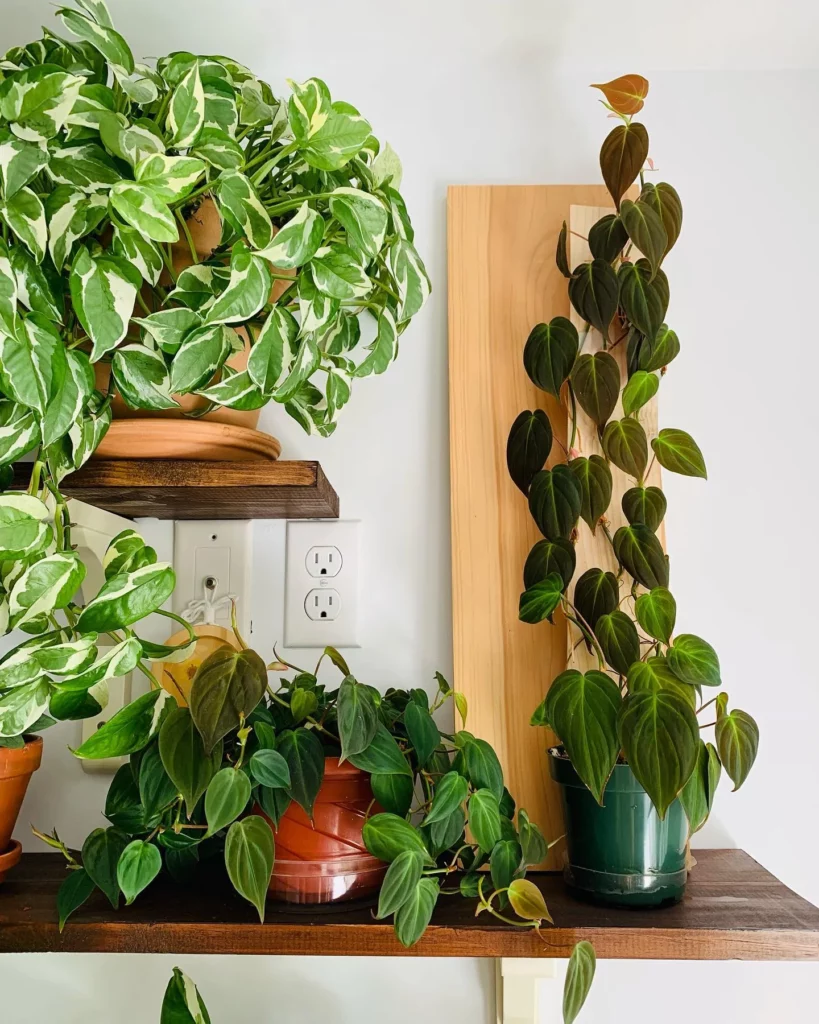

The amount of water and fertilizer needed by a philodendron depends on several factors such as its size, age, type of soil, and environment. Overwatering can lead to root rot while under-fertilizing can cause nutrient deficiencies that show up as yellowing or stunted leaves.
Best practices for watering philodendrons include waiting until the top inch of soil feels dry before watering. Use room temperature water and avoid overwatering by ensuring that excess water can drain out of the pot.
Always use a well-draining soil mix that allows air to circulate around the roots. Choosing the right fertilizer and application methods is also crucial for promoting fuller growth in your philodendron.
Organic fertilizers such as compost or worm castings are ideal because they provide slow-release nutrients without damaging delicate root systems, like chemical fertilizers can do. Apply fertilizer once every two to three months during the growing season and avoid overfeeding, which can lead to burned leaves or weak stems.
Propagation Techniques
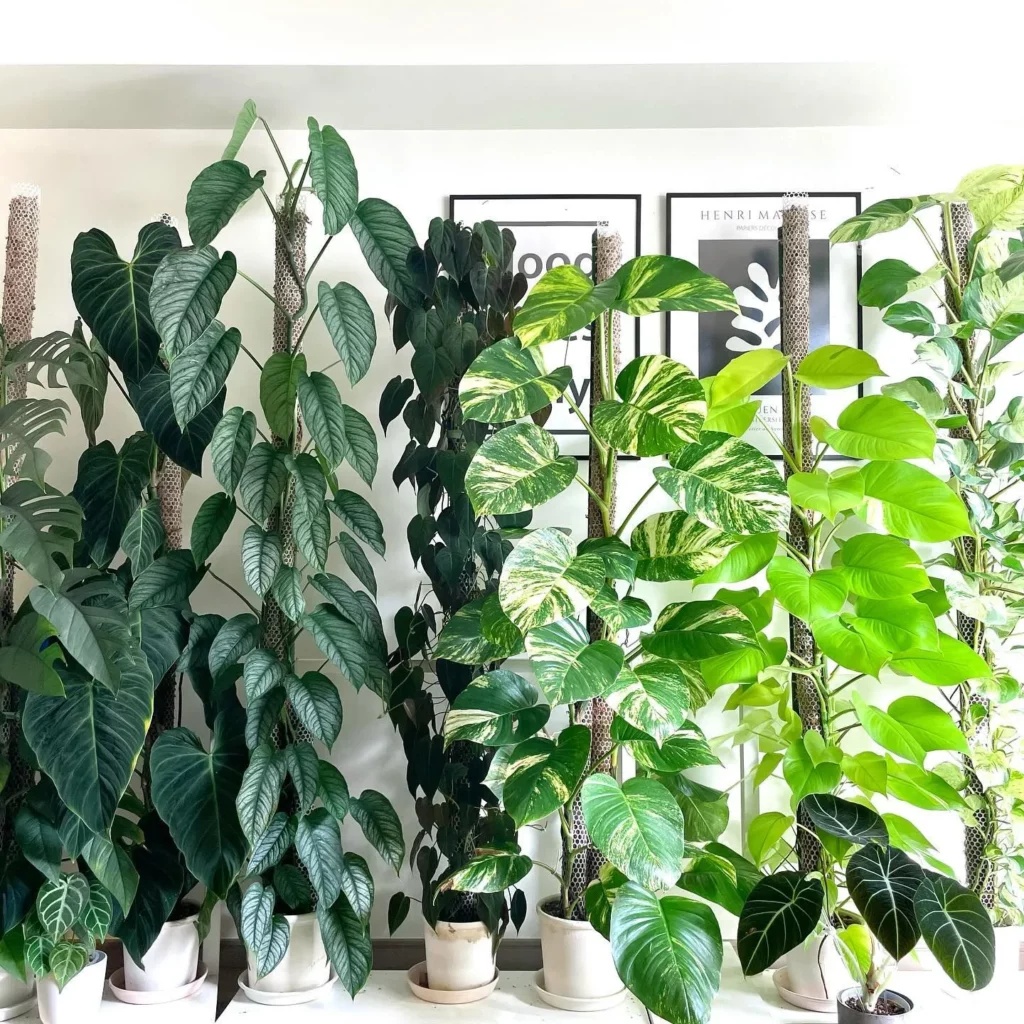
Propagating philodendrons is an essential technique every plant enthusiast should know. One significant benefit of propagation is that it allows you to multiply your plants without spending money on new ones. Additionally, propagating your philodendron allows you to control the quality of the offspring.
If you want a specific type of philodendron, like those with unique colors or leaf shapes, propagating can help you achieve that. There are several methods for propagating philodendrons: air layering, stem cuttings, and division.
Air layering involves making a slice in the stem and wrapping it with moss to encourage root growth before separating it from the parent plant. This method works well for larger plants and allows for stronger roots to develop before being removed from their parent plant.
Stem cuttings involve cutting a portion of the stem below a node or bud and encouraging root development in water or soil. This technique can result in multiple plants and usually involves using rooting hormone as well as placing it in direct sunlight until roots develop.
No products found.
Division involves splitting mature plants into smaller sections when they become too large or have outgrown their pots. This method is perfect if you want to create two or more plants from one large one, but be careful not to damage any vital parts during this process.
Advanced Techniques For Fuller Philodendrons



Pruning techniques are necessary if you want your philodendron to grow fuller and healthier. The first pruning technique involves pinching back stems regularly; this encourages a bushy shape by prompting new growth on the sides of stems rather than just at their tips.
Removing dead or damaged leaves will also promote fuller growth patterns because your plant will put its energy into healthy parts instead of wasting them on diseased areas. Training techniques are crucial if you have vining philodendrons that need support while they grow.
Using stakes or trellises is an excellent way to support your plants, as it allows them to grow up and out instead of just up. Stakes can be used to provide support for individual stems, while trellises can be used for larger plants.
Encouraging aerial roots along the stem is another way to promote fuller growth. You can encourage these roots by misting the plant or wrapping sphagnum moss around the base of stems.
No products found.
Troubleshooting Common Issues With Philodendrons
Philodendrons are easy-to-care-for plants, but they are not without their problems. Pests like spider mites and scale insects can damage or stunt plant growth if left untreated. If you notice any signs of pests, such as webs or white spots on leaves, take immediate action by treating your plant with an insecticidal soap.
Disease can also affect philodendrons, so it’s essential to recognize the signs early on and take appropriate action. Common diseases include root rot and bacterial leaf spot.
Root rot occurs when there is too much water in the soil, making it difficult for roots to breathe; in this case, reduce watering frequency until the soil has dried out appropriately. Bacterial leaf spot appears as yellow spots on leaves; remove any affected leaves immediately.
After reading this, check out our other articles on:
Conclusion:
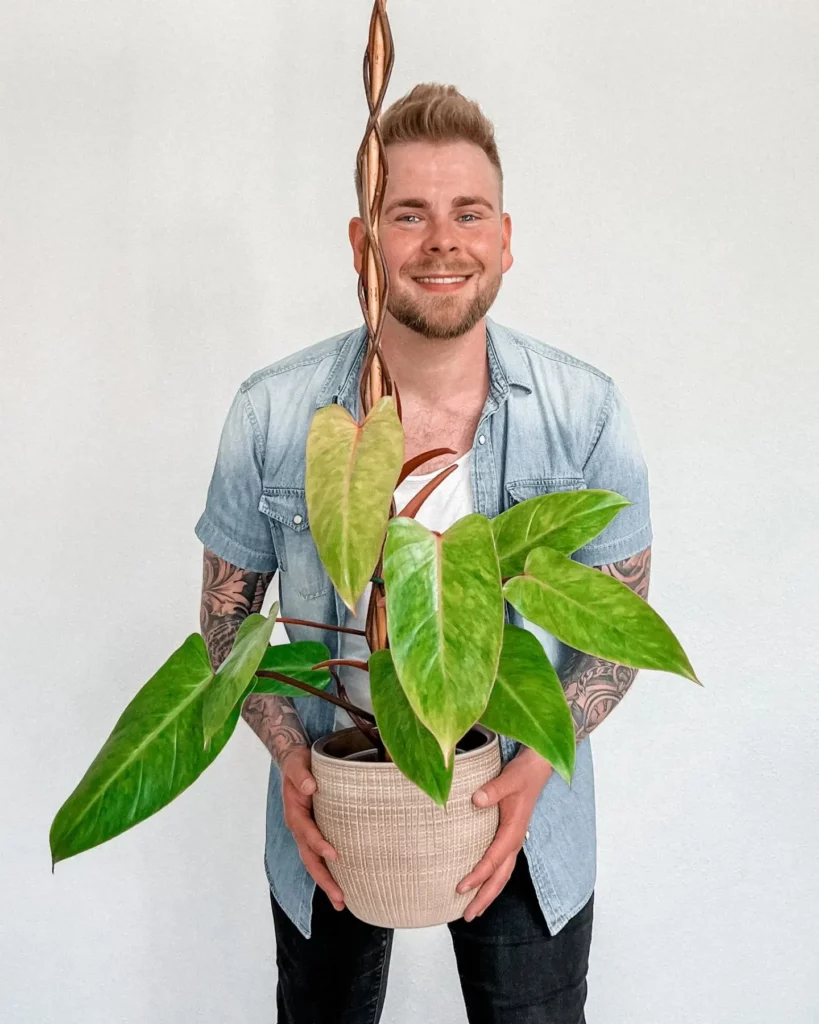
With proper care and attention to detail, philodendron plants can grow fuller and healthier than ever before! Propagation techniques like air layering, stem cuttings, and division are great ways to multiply your plants without spending a fortune on new ones.
Training techniques like using stakes or trellises will give your philodendron some extra support while encouraging fuller growth patterns with more robust structures that last longer than those grown vertically alone! Remember that early intervention is key when dealing with pests or disease – always check for yellow spots on leaves or signs of webbing and treat with insecticidal soap or other appropriate methods as soon as possible to keep your plants healthy and happy for years to come.


